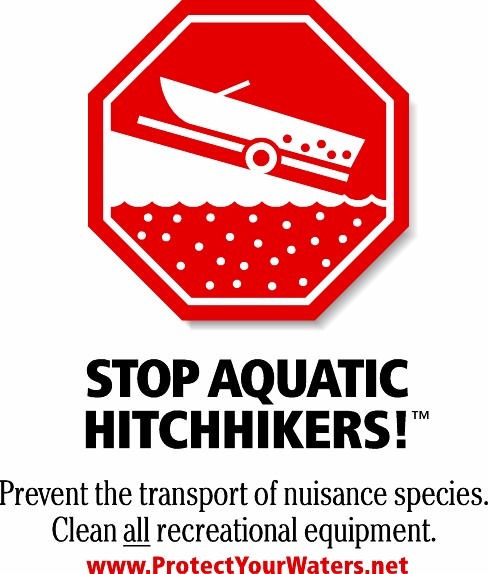by Tim Campbell – UWEX, WDNR, WISG
It is well known in the aquatic invasive species (AIS) world that recreational boaters are the primary pathway for new AIS to enter a lake or river. A combination of regulations that help prevent the spread of AIS and the “Clean Boats Clean Waters” boater education program has raised awareness of AIS issues among boaters and empowered them to take steps to prevent the spread of AIS. In fact, over 90% of boaters in Wisconsin have reported being aware of AIS issues and also take prevention steps after a day of boating. The few new populations of AIS found each year when compared to 10 years ago indicates that boaters are doing their part to stop AIS.
As you may have heard, Lake Mendota was confirmed in 2015 to support invasive zebra mussels. These mussels attach to rocks, wood, plants, piers…any firm surface, and alter food webs. There is no viable control method once they become established in a lake. Since Lake Monona is downstream, this lake will likely soon host zebra mussels too, if it doesn’t already. Protecting Lake Wingra from zebra mussels and other AIS depends on us.
In the recent past, most boater outreach has focused on trailered boats and motorized watercraft. The trailer and complexity that the motor adds provides many places for AIS to hide and hitch ride. However, all waters users pose some risk of transporting AIS, including canoes, kayaks, standup paddle boards, and others. The relative simplicity of these crafts make taking AIS prevention steps simple and easy to do.
The standard Stop Aquatic Hitchhikers! guidance applies to all watercrafts and is very effective at stopping the spread of AIS. On non-motorized watercraft, these steps should take just a few minutes to perform. These steps are required to be taken before leaving a waterbody, but they can even be taken when portaging around a dam or between lakes as extra precautions.
Even though the Stop Aquatic Hitchhikers! guidance is effective at preventing the spread of AIS, there are some actions that boaters can take to further reduce their risk of transporting AIS. Drying watercraft with a towel before changing water bodies can help remove AIS, like zebra mussel veligers or spiny waterfleas, which are difficult to see with the naked eye. A light bleach solution (2.5 tablespoons/gallon) sprayed on the hull and wiped or rinsed off can kill and remove anything that is difficult to see. At the end of your trip, rinsing watercraft off with a hose can remove anything that is hard to see, and letting it dry in the sun for five or more days can kill anything still on the watercraft. While these extra steps are not required by law, they do provide extra protection against transporting AIS.
Protecting our lakes and rivers form the undesirable impacts of AIS is everyone’s responsibility -including those that use nonmotorized and hand-launched watercraft. The simple guidance of “Inspect Remove Drain Never Move” can help remind boaters of easy steps they need to take to help Stop Aquatic Hitchhikers! and to keep Lake Wingra the great lake this it is today.
INSPECT boats, trailers and equipment.
REMOVE all attached aquatic plants and animals.
DRAIN all water from boats, vehicles, equipment including livewells and buckets containing fish.
NEVER MOVE plants or live fish away from a waterbody

